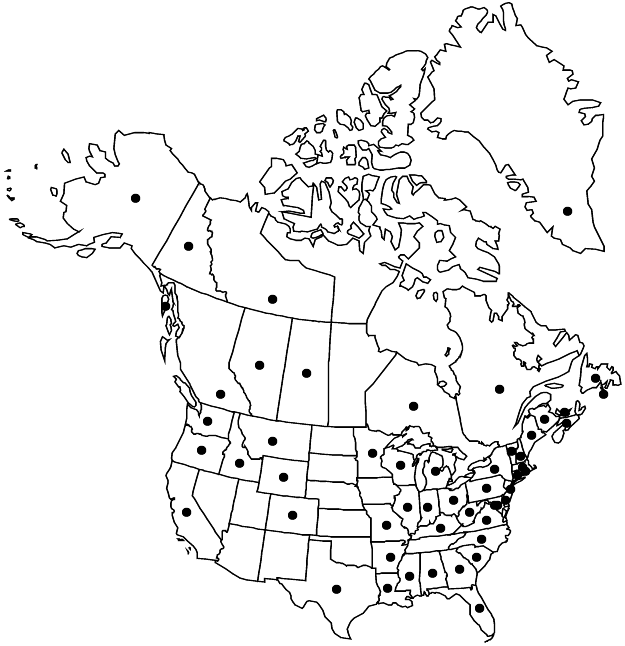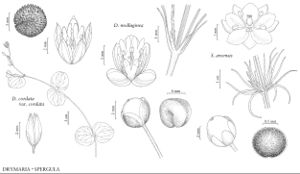Difference between revisions of "Spergula arvensis"
Sp. Pl. 1: 440. 1753.
imported>Volume Importer |
imported>Volume Importer |
||
| Line 66: | Line 66: | ||
|publication year=1753 | |publication year=1753 | ||
|special status=Weedy;Introduced;Illustrated | |special status=Weedy;Introduced;Illustrated | ||
| − | |source xml=https:// | + | |source xml=https://bitbucket.org/aafc-mbb/fna-data-curation/src/2e0870ddd59836b60bcf96646a41e87ea5a5943a/coarse_grained_fna_xml/V5/V5_17.xml |
|subfamily=Caryophyllaceae subfam. Polycarpoideae | |subfamily=Caryophyllaceae subfam. Polycarpoideae | ||
|genus=Spergula | |genus=Spergula | ||
Latest revision as of 22:09, 5 November 2020
Plants glabrous or, often, glandular. Stems usually branched proximally, 10–50+ cm. Leaf blades usually appearing terete, 1.5–3(–5) cm, margins often revolute, forming abaxial channel. Pedicels erect to ascending, reflexed, secund in fruit. Flowers: sepals 3.5–5 mm; petals ovate, 3/4–1 times as long as sepals in flower, apex obtuse; stamens usually 10. Capsule valves 3.5–5 mm. Seeds sometimes keeled or winged, subglobose, 1–1.1 mm wide, surface minutely roughened or obscurely low-tuberculate (50×), covered with white, club-shaped papillae in part or throughout (packing of seeds in capsule may prevent papillae development in spots), wings white, ± 0.1 mm wide. 2n = 18, 36 (both Europe).
Phenology: Flowering spring–early summer.
Habitat: Sandy roadsides, cultivated fields, other disturbed areas
Elevation: 10-2000 m
Distribution

Introduced; Greenland, St. Pierre and Miquelon, Alta., B.C., N.B., Nfld. and Labr. (Nfld.), N.W.T., N.S., Ont., P.E.I., Que., Sask., Yukon, Ala., Alaska, Ark., Calif., Colo., Conn., Del., D.C., Fla., Ga., Idaho, Ill., Ind., Ky., La., Maine, Md., Mass., Mich., Minn., Miss., Mo., Mont., N.H., N.J., N.Y., N.C., Ohio, Oreg., Pa., R.I., S.C., Tex., Vt., Va., Wash., W.Va., Wis., Wyo., Eurasia, introduced in Central America, South America, Asia (Korea), Africa, Australia.
Discussion
Spergula arvensis is often a significant weed in sandy crop lands, but it is sometimes used as a forage crop in areas with poor, sandy soils; it was intentionally introduced to Crawford County, Michigan, in 1888 (O. Clute and O. Palmer 1893). Historical collections are known also from Kansas, Nebraska, North Dakota, and South Dakota, where Spergula arvensis may have been introduced but apparently did not persist.
